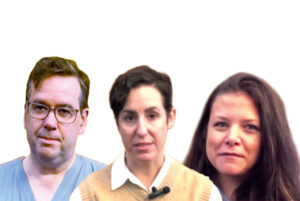
Vascular Specialist attended the SVS Complex Peripheral Vascular Interventions (CPVI) Skills Course and spoke with participants about the hands-on learning experience designed for vascular surgeons and specialists at all stages of their careers. Over two days (Sept. 28–29), participants learned the latest techniques and innovations for treating peripheral arterial disease (PAD) through small-group simulations, using cadavers and benchtop models. Here, a small group of attendees share their experiences.
“I want to learn a bit more about distal revascularization, and I wanted to see if this course would be worthwhile for our trainees to attend in the future,” said Daragh Moneley, MD, a training program director from the Royal College of Surgeons in Dublin, Ireland. “The hands-on stations have been excellent, particularly the industry being present and being able to demonstrate their products on actual models. It really shows the intricacies of how to use them or where you might be able to apply them. We’ll definitely encourage our trainees to attend, there’s no doubt about that”
Alicia Stafford, MD, a vascular surgeon with Evansville Surgical Associates in Evansville, Indiana, used the course as an opportunity to add new skills to her armamentarium. “I deal with a lot of PAD and advanced diseases in the leg in my region and I felt like this course would be a good place to learn extra skills to help me take care of those patients,” she said. “I’m excited to see if I can institute deep vein arterialization, and so, coming to a course that teaches me the newer techniques and innovations that are out there to take care of my patients just makes sense.”
Amani Politano, MD, a vascular surgeon at Oregon Health and Science University used the course to brush up. “It’s been a while since I graduated from my training program and I thought that this would be a good time to get some new skills and things that I didn’t do when I trained,” he shared, “and also to get a little bit of insight into what’s maybe more cutting edge in the peripheral percutaneous world than what I remember years ago. This has definitely given me a lot more opportunity to practice some tools that I’ve heard about but maybe not done very frequently and then added some tools to my toolbox.”












